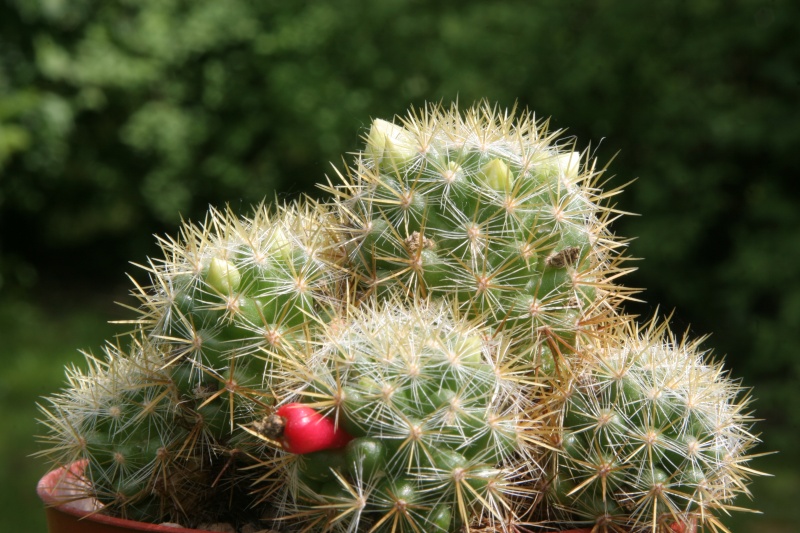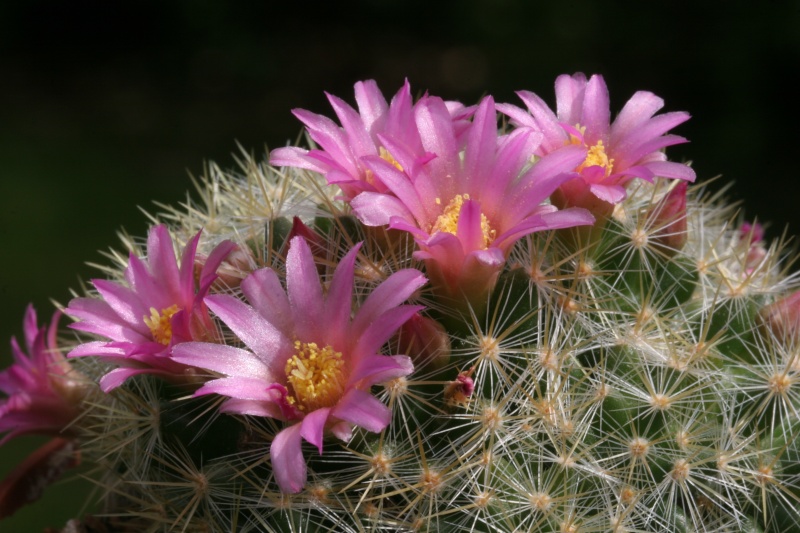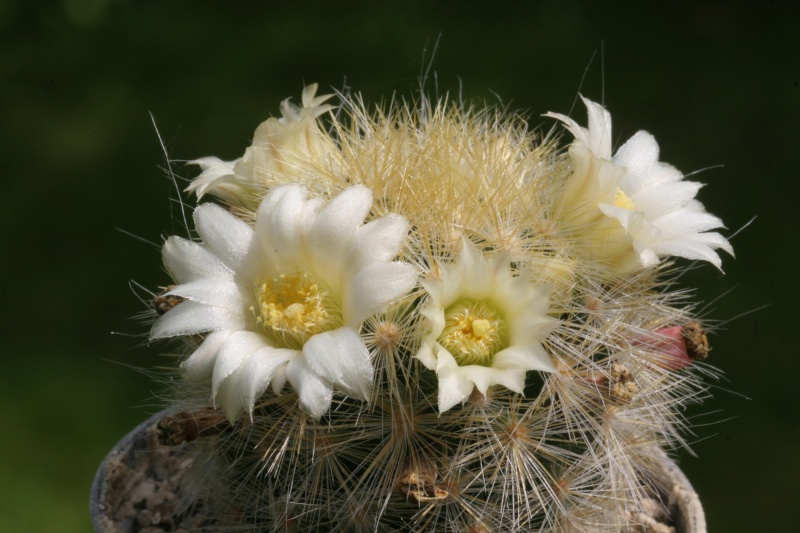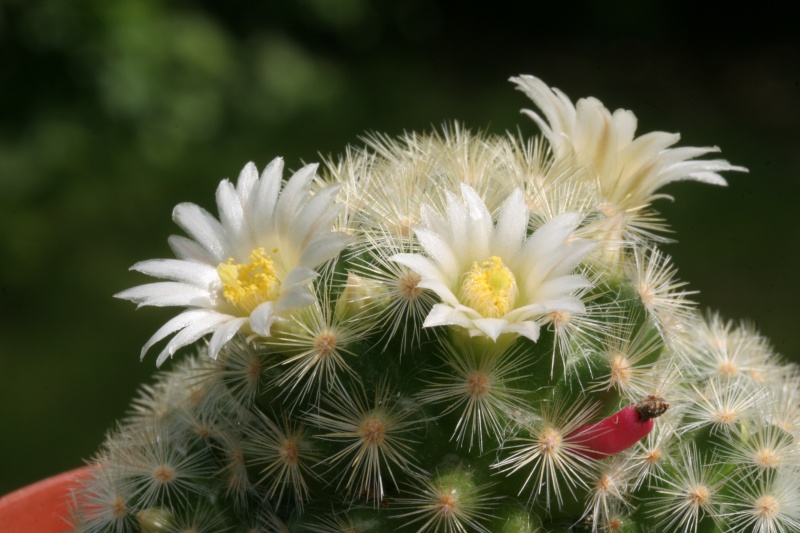In 2003 I acquired a grafted M. zublerae from someone in England. The origin of this M. zublerae was the Cante nursery in Mexico. This plant might have been an offset from a plant collected at the original location (between Tula and Ocampo in Tamaulipas), or it might have been grown from seed at Cante.
The plant looked like a typical M. zublerae and it flowered well for me, with pale yellow flowers. Every year fruits were formed which contained the typical large zublerae seeds. From the seeds I was able to grow several plants.
Surprise: Some of the plants had a different appearance than the mother plant. Moreover, the flower colour was pink-red in a few cases instead of the pale yellow zublerae colour.
I have attached 5 photos:
1. The original plant, with flower buds developing and with a fruit which contains the large zublerae seeds.
2. A plant grown from seed of the original zublerae in 2006 with zublerae-like spination, but with pink-red flowers. No fruits have been formed as yet.
3. A plant grown from seed in 2006 with quite different spination and even with occasional, very long axillary hairs (visible in the photo). The flowers are whitish, and fairly large, the largest flower being 2.5 cm in diameter. Fruits have been formed, but the seeds are much smaller than zublerae seeds (about half the size). No offsets have been formed until now.
4. A plant grown from seed in 2009, again with different spination and with whitish flowers. Fruits were formed but the size of the fruits is much smaller than the size in 1 and 3. The seeds were again small.
5. A few plants grown from seed in 2009 with zublerae-like spination, but with pink-red flowers.
I have pollinated 2 and 5, hopefully fruits will be formed.
These examples show how careful one has to be with seeds obtained from plants in a collection with many Mammillarias. In this zublerae case, there are two possibilities: a. the original plant was grown at Cante from 'impure' seed, i.e. it was a hybrid itself, or b. hybridization has occurred in my greenhouse, possibly with M. laui and/or M. carmenae, which were situated close to the zublerae plant. In nature, M. laui, M. carmenae and M. zublerae do not grow very far apart, i.e. they might be related to each other and hybridization might be possible (which of course, is known to occur between M. laui and M. carmenae).
I am planning to write a more extensive account in the J. Mam. Soc.
Wolter.





